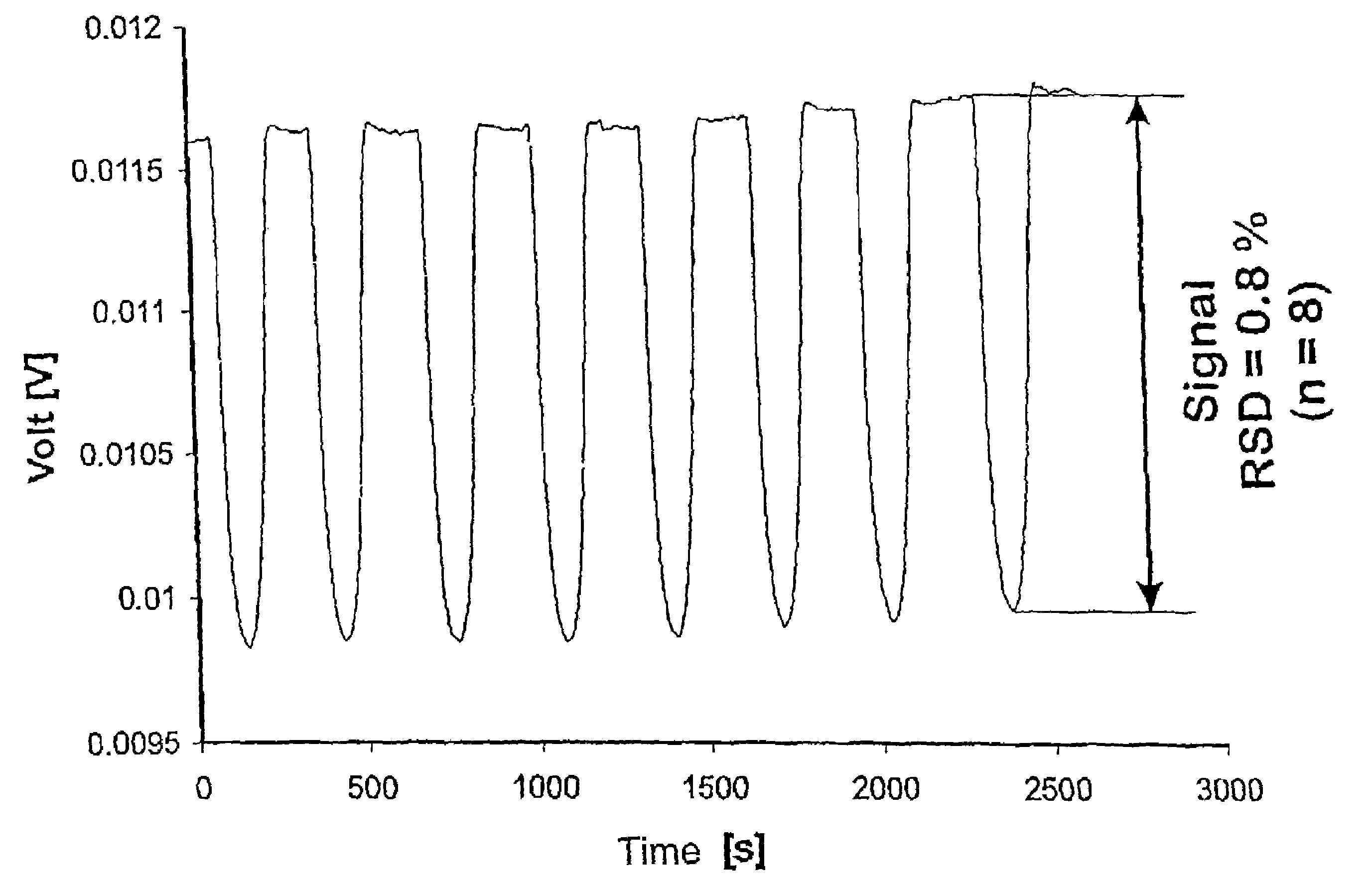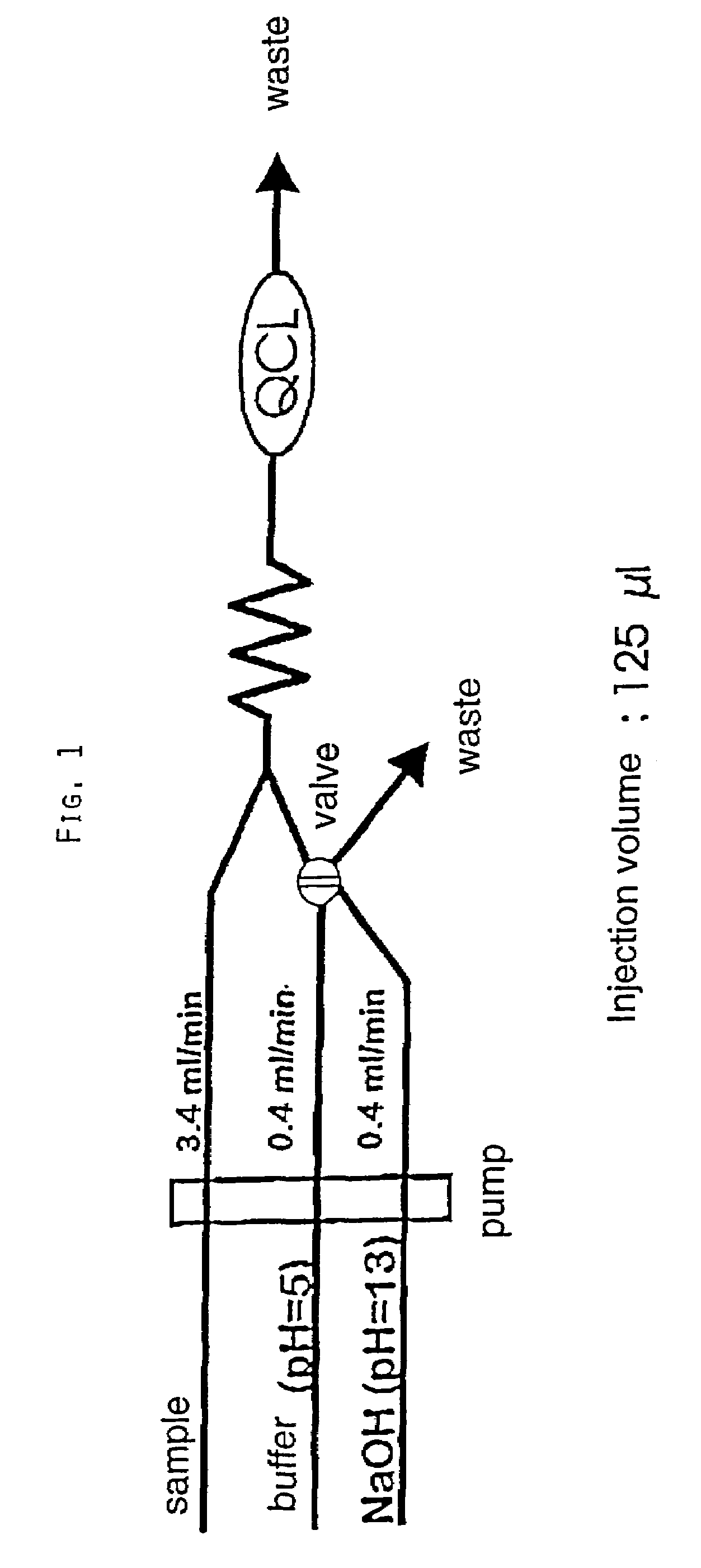Method of infrared-optically determining the concentration of at least one analyte in a liquid sample
- Summary
- Abstract
- Description
- Claims
- Application Information
AI Technical Summary
Benefits of technology
Problems solved by technology
Method used
Image
Examples
Embodiment Construction
[0022]The present invention will be explained in more detail by way of reference to the figures illustrated in the drawings.
[0023]In FIG. 1, an arrangement for the infrared-optical determination of an analyte in a liquid sample by means of a quantum cascade laser (QCL) is illustrated. In this instance, the detection is preceded by a modulation of the analyte, phosphate, i.e. a pH change. The sample is supplied to the detector QCL at a rate of 3.4 ml / min. Upstream of the detector, either a buffer having a pH of 5, or a soda lye having a pH of 13, is mixed with the sample, depending on the valve position.
[0024]In FIG. 2a it can be seen that the absorption spectrum changes according to the change of the pH. The black bar characterizes the intensity peaks produced by the quantum cascade laser used (see also FIG. 2b). Up to approximately 20 seconds (pH=5), the analyte is present as H2PO4−. From about 30 seconds to about 60 seconds, the analyte is present as PO43− (pH=13). At a pH of 5, l...
PUM
 Login to View More
Login to View More Abstract
Description
Claims
Application Information
 Login to View More
Login to View More - R&D
- Intellectual Property
- Life Sciences
- Materials
- Tech Scout
- Unparalleled Data Quality
- Higher Quality Content
- 60% Fewer Hallucinations
Browse by: Latest US Patents, China's latest patents, Technical Efficacy Thesaurus, Application Domain, Technology Topic, Popular Technical Reports.
© 2025 PatSnap. All rights reserved.Legal|Privacy policy|Modern Slavery Act Transparency Statement|Sitemap|About US| Contact US: help@patsnap.com



